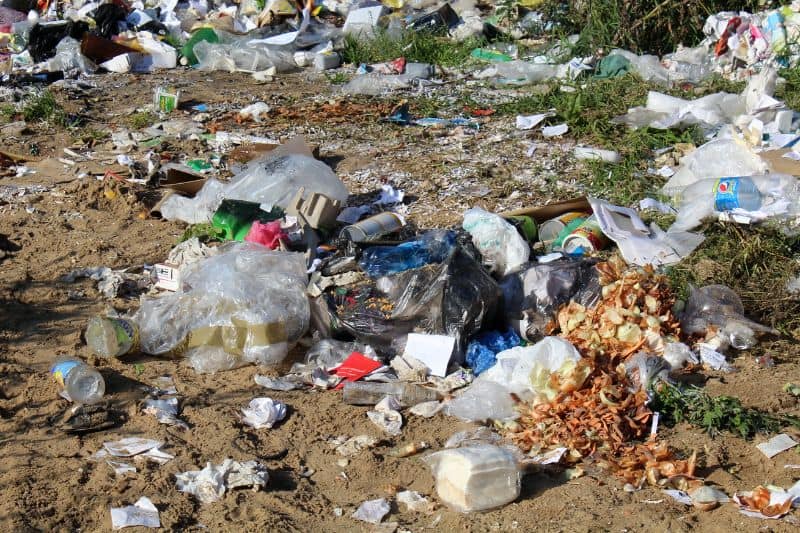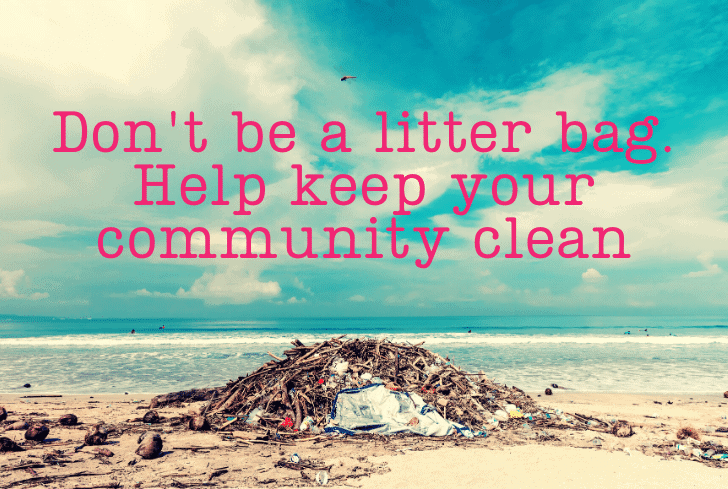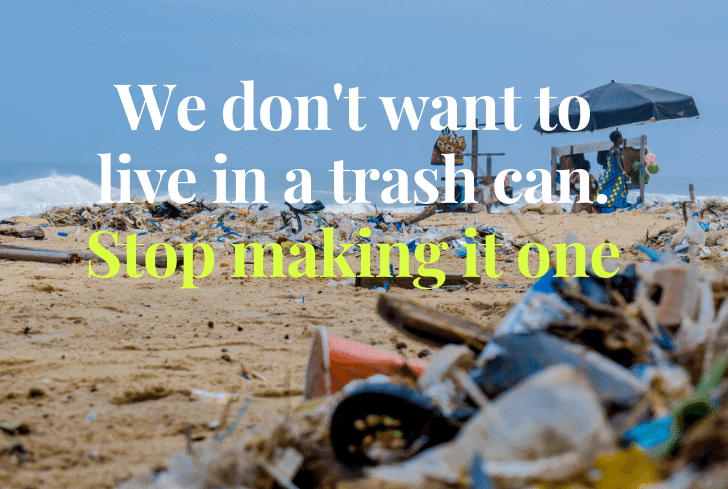Litter is nothing but a piece of waste or rubbish that has been disposed of improperly, without consent, and at the wrong location.
Littering simply means throwing away objects on the ground or leaving them lying on the ground instead of disposing of them in garbage cans, recycling bins, or trash containers.
The waste that originates from houses, industries, and factories should be placed either in a recycling bin or sent to an energy plant or at a site meant for disposing of garbage.
Litter can originate from construction and demolition sites, households, industries, uncovered trucks, pedestrians, and moving vehicles. Apart from that, the unavailability of garbage bins and being too lazy to walk to trash containers are other reasons for littering.
As far as littering effects are concerned, it has an economic, legal and environmental impact in the form of spending millions of dollars in cleaning up litter, huge fines if caught littering from vehicles and damage to our surroundings that can have an effect on plants and animals and can cause loss to local tourism industry.
According to Wikipedia,
“Litter consists of waste products that have been disposed improperly, without consent, at an inappropriate location. Litter can also be used as a verb. To litter means to drop and leave objects, often man-made, such as aluminum cans, cardboard boxes or plastic bottles on the ground and leave them there indefinitely or for others to dispose of as opposed to disposing of them properly.“
Plain and simple, littering is wrong. We have trash and garbage cans for a reason, so why throw away your trash on the ground when you could throw it away in its intended place? People still litter, largely for the following reasons:
- Laziness
- The area is already messy; why bother finding a trash can?
- People don’t realize that with littering, there do come consequences.
- The garbage cans are already overflowing.
- The garbage cans have a note stating they are for specific trash only.
- My neighbor litters, and so should I!
- What’s your problem?
- Really? It’s just one paper!
- People are starving in Africa! What do you care about littering?
- I’m drunk.
- The garbage can is too far away.
The list could really go on forever. People come up with countless excuses to throw their pieces of trash down on the ground instead of taking a short amount of time to find a garbage can and properly throw it away.
But littering does have consequences, and here are some facts that may surprise you. They include but are not limited to, ecological, financial and lawful consequences.
Read Also: 50+ Littering Quotes and Slogans To Save the World From Trash
30 Astonishing Facts About Littering You Might Not Know
1. Litter does cause severe accidents: Sometimes, all it takes is for some trash on the road, and it’s a car accident waiting to happen. Whether it’s because somebody drove their tiny Toyota Prius over a wooden crate or swerves their RV to avoid the trash, you can indirectly cause a car accident by littering on the road. Car accidents lead to severe injuries and even deaths.
2. People on the move are more likely to litter: The previous point illustrates that those in a hurry are more likely to litter. Motorists (53%) and pedestrians (23%) litter the most, likely because they are too lazy to stop and find a rubbish bin.
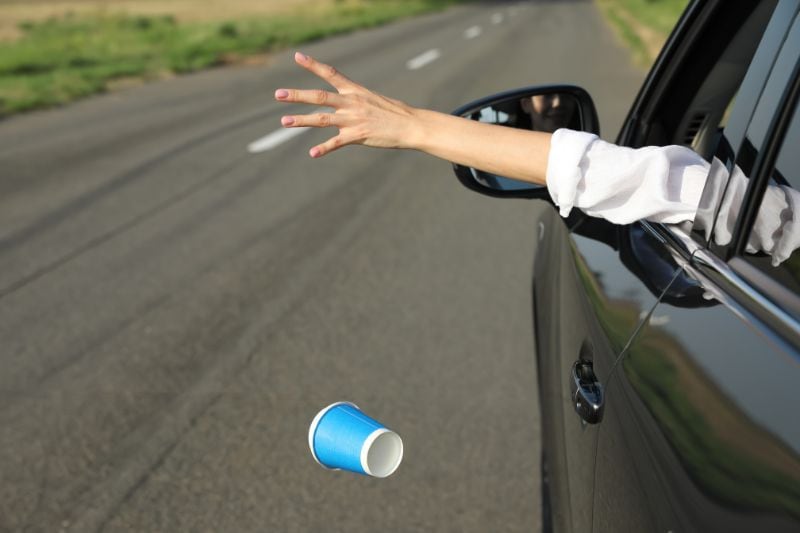
For example, if you’re getting fast food, a lot of the time, you’ll be on your way somewhere.
3. Household, industrial, construction, and other like packaging waste are the most common types of sources of litter.
4. It’s illegal to litter. Though the fines vary by state, city, and county, you will be charged if caught littering.
5. It doesn’t look too nice. Places with high littering are also often riddled with crime, have lower values on homes and property, and are more likely to be the site of fires. You could ultimately end up losing money on your house.
6. Data shows the presence of litter in a community decreases property values by 7%. As per the survey, 40% of homeowners think that litter reduces the value of homes by 10-24%, and according to 55% of the realtors, property value decreases by about 9%. More than half of the property appraisers will reduce the assessed value of homes if littered.
7. It’s expensive…very expensive. Every year, millions upon millions of dollars are spent cleaning up litter. The KAB study that set out to estimate costs for “litter abatement expended by governmental entities, institutions, businesses and citizens.”
They determined that it costs “approximately $11.5 billion per year for litter cleanup, education and/or disposal programs,” and further noted that this is likely to be a large underestimate due to the failure of many entities and organizations to track and document their cleanup costs.
8. The money spent on litter management should be going to more productive things. However, people don’t realize that something as small as littering done on a mass scale does indeed affect them.
Taxpayers’ dollars are being spent on littering as we speak. If you want that to stop, then set an example. Quit littering and encourage others to do the same. It’s people like you who can make a difference.
9. Litter on the ground degrades natural areas and kills plants and animals. You’re wondering how this happens? Well, all that it takes is for a cat to get stuck in a bottle or a bird to get caught up in a soda can holder.
10. The beverage container litter may be a significant underestimate; many other litter studies have found much higher percentages of beverage container litter.
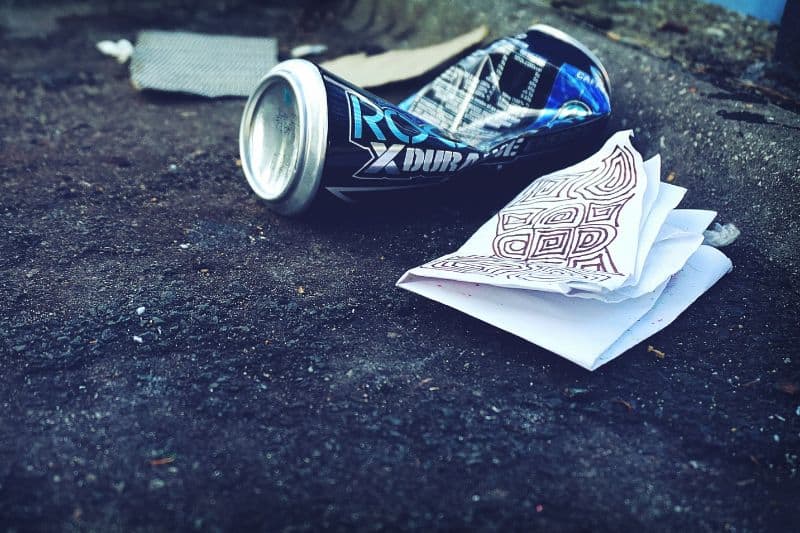
A review of 19 litter studies by DSM for the state of Rhode Island found that the proportion of beverage containers in litter ranged from a low of 4.4% to a high of 48%, with an average of 14%. The current estimate projects 1.4 billion beverage containers found on roadways, which are mostly beer and soft drinks other than water and sports drinks.
11. A very large majority of Americans have admitted to littering in their lifetimes. The average American only walks a few steps before dumping their trash on the ground without even searching for a garbage can.
12. Billions of tons of litter are dumped into the ocean each year, and it is more than the 250 million tons of trash generated each year.
When you toss your garbage on the sidewalk or the highway, you may, in reality, be throwing it away into the Atlantic. This leads to the repeated killing of fish on a daily basis and the gradual depletion of marine life. Believe it or not, the litter we produce is causing more underwater species to become endangered.
13. Plastic bags are the most common litter. They are also the main threat to aquatic animals, including everything from sea turtles and other reptiles to whales, dolphins, and sharks, finding their way into the ocean, which can be mistaken for food and swallowed.
14. Cigarette butts make up over half of our littered objects, and they take a grand total of ten years to decompose because of cellulose acetate, contrary to the popular perception that cigarette butts decompose very quickly in only a matter of days. In reality, cigarette butts are a serious threat to the environment.
15. The main causes of littering are laziness, ignorance, people don’t realize the effects of littering, the bins are dirty and not big enough, there are not enough bins and those bins aren’t emptied often enough, poor parenting and education, there is no fine for littering, one person can’t make a difference, no sense of pride, not bothered about effects of littering.
16. The most commonly littered items are fast-food packaging, particularly wrappers made of a combination of plastic, cardboard, and paper. These materials constitute a significant portion of littered objects.
The likelihood of people littering such items significantly rises, especially along highways, highlighting the connection between fast-food packaging and increased littering in specific environments.
17. The most commonly littered objects include the following in descending order: fast food, paper, aluminum, glass, and plastic. It turns out someone would rather toss their burger wrapper and empty soda on the street than find a garbage can, and not surprisingly. This is mostly done on the roadside and highways.
18. Fast food wrappers and aluminum cans are the two most common items found while cleaning litter.
19. Litter spoils water quality. The hazardous waste seeps into the soil and can cause groundwater pollution.
20. Litter is smelly and dirty and can be dangerous and unhealthy for our environment. It affects communities and people who live there. It could be poisonous for plants and animals. It can have a severe impact on tourism.
21. The social problems related to litter include safety, fire, human health, and indirect health hazards from bacteria, rats, roaches, and mosquitoes attracted to litter.
22. Littering can carry germs, bacteria, and viruses. One of the harmful germs is Scavengers. They can have a devastating effect on the crops as cattle are susceptible to ingesting the chemical objects or even metal of the garbage.
23. Litter, when not covered on a truck bed, can cause it to blow out without the driver knowing.
24. Do not throw litter from a vehicle as it may cause damage to the surroundings and can have a bad effect on the local tourism industry.
25. Litter can hamper the economic development of a community. The excess litter in a particular area can hamper the chance for growth in the long term.
When new businesses look for a dynamic, growing community where they can grow, they would hardly be interested in setting up new ventures if they see a lot of litter around.
Instead, they choose to set up in cleaner communities.
26. Most deliberate litterers belong to the age group of 18 and 34. People within this age bracket are the most likely to litter, whereas older folks and children generally are more responsible. This may suggest that respect for the environment is developed as people get older.
27. Men are the leading litterers. The study published in the Journal of Consumer Research supports previous research that found men are likelier to litter, leave a larger carbon footprint, and feel less responsible about environmental impacts than women.
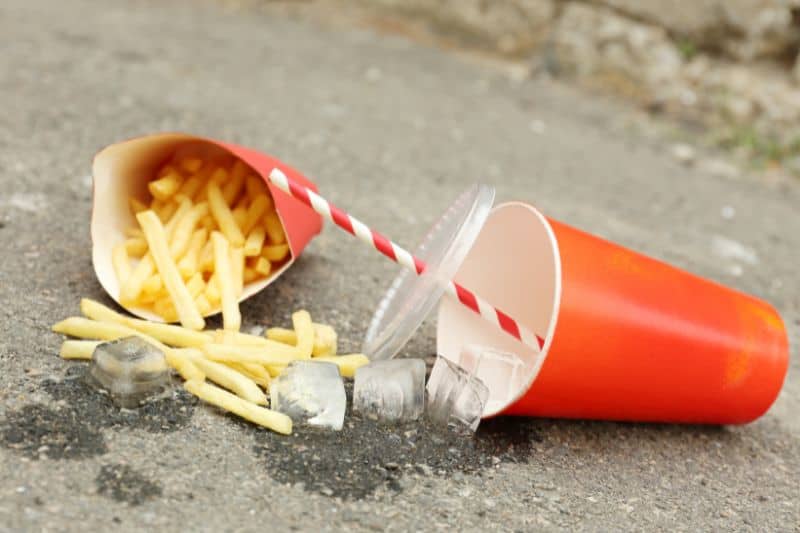
28. Littering destroys natural beauty. You assume that a cigarette butt will not do any harm or a fruit peel will decompose, and before you know it, it is a heap of trash growing into a landfill. A landfill is not a pretty site for land; rather, it destroys a well-tentered and green location.
29. Litter can be controlled. People need to be educated regarding the ill effects of littering. Education plays an important role here. Children need to be taught at the elementary level how littering can cause environmental impact. They can also teach others they see littering and teach them to dispose of garbage the right way.
30. Reducing litter is just a 3 step process: stop littering, pick up litter, and report if you find someone littering illegally.
